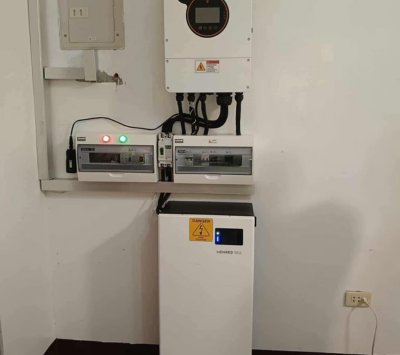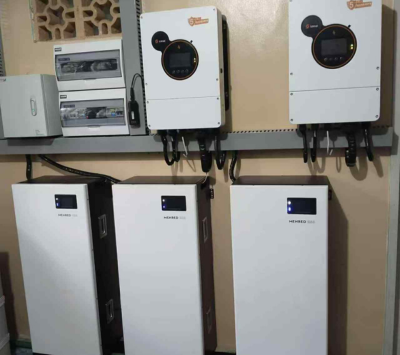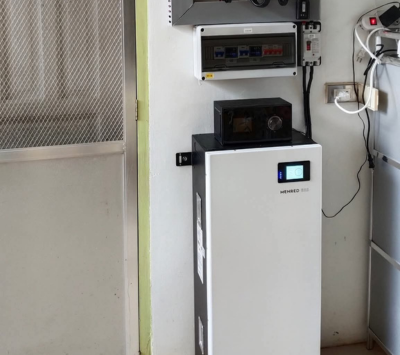Lithium-ion (Li-ion) batteries have become one of the most widely used power sources in modern technology, from smartphones to electric vehicles (EVs). Their unique characteristics set them apart from other types of rechargeable batteries. This article delves into the key lithium-ion battery characteristics, providing a comprehensive understanding of their advantages, technical specifications, and real-world applications.
1. What is a Lithium-Ion Battery?
A lithium-ion battery is a type of rechargeable battery that uses lithium ions to transfer charge between two electrodes — the anode and cathode. They are widely used in various applications due to their high efficiency and rechargeable capabilities. Unlike traditional lead-acid or nickel-based batteries, lithium-ion batteries offer higher energy densities, longer lifespans, and a smaller form factor.
2. Key Lithium-Ion Battery Characteristics
2.1. High Energy Density
One of the most notable characteristics of lithium-ion batteries is their high energy density. This refers to the amount of energy a battery can store in relation to its weight and size. The energy density of a typical lithium-ion battery is approximately 150 Wh/kg (watt-hours per kilogram), which is much higher than other rechargeable batteries like lead-acid or nickel-cadmium. This high energy density makes lithium-ion batteries ideal for portable devices, such as smartphones, laptops, and electric vehicles, where space and weight are crucial factors.
2.2. Long Cycle Life
Lithium-ion batteries typically offer a long cycle life, meaning they can be charged and discharged many times before their performance significantly degrades. A typical lithium-ion battery has a cycle life of around 500 to 1,500 charge cycles, depending on the quality and use conditions. Cycle life is an important metric as it determines the lifespan of the battery, which can range from 3 to 10 years for most lithium-ion products. This characteristic makes them an excellent choice for electric vehicles and renewable energy storage, where long-term reliability is essential. For instance, MENRED ESS energy storage batteries use HIGEE A-grade lithium iron phosphate (LiFePO₄) cells, which offer an outstanding cycle life of over 6,000 cycles and a lifespan of more than 10 years. This remarkable durability makes them an ideal choice for large-scale energy storage systems, offering long-term performance, reduced maintenance costs, and high efficiency.
2.3. Lightweight Design
Compared to other battery types, lithium-ion batteries are lightweight and compact, making them ideal for mobile applications. They are up to 40-50% lighter than comparable lead-acid batteries, which is a significant advantage in industries such as consumer electronics and electric vehicles, where minimizing weight is critical for performance and energy efficiency.
2.4. High Voltage and Efficiency
Lithium-ion batteries have a higher nominal voltage compared to other rechargeable battery types. Typically, the voltage for a lithium-ion cell is 3.6-3.7 volts, which is considerably higher than the 1.2 volts of a nickel-cadmium (NiCd) or nickel-metal hydride (NiMH) battery. The higher voltage contributes to the efficiency of these batteries, reducing the number of cells required in larger battery packs and leading to better overall energy output. This higher voltage also results in faster charging times and more efficient use of stored energy.
2.5. Low Self-Discharge Rate
Another important characteristic is the low self-discharge rate of lithium-ion batteries. Self-discharge refers to the rate at which a battery loses charge when not in use. Lithium-ion batteries have a self-discharge rate of about 2-3% per month, which is much lower than other battery chemistries such as nickel-cadmium, which may lose up to 20% of their charge per month. This low self-discharge rate means that lithium-ion batteries maintain their charge longer, even if they are not in use, making them more convenient for devices that are used infrequently.
2.6. Environmental Considerations
Although lithium-ion batteries are widely considered to be more environmentally friendly than older battery technologies, they still require careful handling and disposal due to the presence of materials like lithium, cobalt, and nickel. Recycling programs and advancements in battery technology are addressing these issues, making lithium-ion batteries increasingly sustainable. Additionally, their higher energy efficiency contributes to reducing overall energy consumption, particularly in applications like renewable energy storage and electric vehicles.
3. Common Technical Specifications of Lithium-Ion Batteries
3.1. Nominal Voltage
As mentioned earlier, the nominal voltage of a lithium-ion battery cell is typically 3.6 volts. The actual voltage of a fully charged cell is about 4.2 volts, and when discharged, it drops to approximately 3.0 volts. This stable voltage output is one of the reasons lithium-ion batteries are preferred in applications requiring consistent power, such as laptops and electric vehicles.
3.2. Capacity and Energy Density
Capacity is usually measured in mAh (milliampere-hours) for small devices or Ah (ampere-hours) for larger batteries, indicating the total charge the battery can store. For instance, a smartphone battery may have a capacity of 3,000 mAh, while an electric vehicle battery pack may range from 20,000 mAh to 100,000 mAh or more. The energy density of lithium-ion batteries is typically around 150-250 Wh/kg, allowing them to provide more power while maintaining a lightweight form factor.
3.3. Cycle Life and Performance
Cycle life refers to the number of charge and discharge cycles a battery can undergo before its capacity drops below a certain threshold (usually 80% of its original capacity). Lithium-ion batteries generally offer 500-1,500 charge cycles, depending on the specific chemistry used. Batteries with higher cycle life are typically made from lithium iron phosphate (LiFePO4), which provides improved thermal stability and longer life compared to other lithium-ion chemistries.
4. Advantages of Lithium-Ion Batteries
The advantages of lithium-ion batteries extend beyond their technical specifications. Some of the key benefits include:
- Faster charging times: Lithium-ion batteries can be charged faster than many other battery chemistries.
- Higher energy output: With a higher voltage and energy density, they offer better performance for energy-intensive applications.
- Reduced maintenance: Unlike lead-acid batteries, lithium-ion batteries do not require frequent maintenance, making them easier to use and more reliable.
- Eco-friendly: As technologies improve, lithium-ion batteries are becoming more recyclable and less harmful to the environment.
5. Applications of Lithium-Ion Batteries
5.1. Consumer Electronics
Lithium-ion batteries are the preferred power source for consumer electronics due to their compact size, lightweight design, and high energy density. They are used in smartphones, laptops, tablets, cameras, and other portable devices, offering users longer operating times and faster charging.
5.2. Electric Vehicles
The rise of electric vehicles (EVs) has been fueled by advances in lithium-ion battery technology. Electric vehicles require batteries that are lightweight yet capable of providing high energy output over long distances. Lithium-ion batteries meet these requirements, making them the primary power source for EVs. Companies like Tesla and Nissan use lithium-ion battery packs in their electric cars, providing longer ranges and more efficient energy use.
5.3. Renewable Energy Storage
Lithium-ion batteries play a significant role in renewable energy storage. Solar and wind energy systems rely on efficient energy storage to ensure a continuous power supply, especially during non-peak production times. Lithium-ion batteries are commonly used to store energy produced by renewable sources, providing backup power and stabilizing the grid.
6. Safety Features and Challenges
While lithium-ion batteries offer numerous advantages, they also present some safety challenges. Issues like overcharging, overheating, and short-circuiting can lead to thermal runaway, which may cause a battery to catch fire or explode. Modern lithium-ion batteries are equipped with safety features such as Battery Management Systems (BMS) to monitor the voltage, temperature, and overall condition of the cells, reducing these risks.
7. The Future of Lithium-Ion Technology
The future of lithium-ion technology looks promising, with ongoing research into improving battery chemistry, extending cycle life, and reducing environmental impact. Innovations like solid-state batteries and sodium-ion batteries aim to address some of the limitations of lithium-ion batteries, including safety and resource scarcity.
8. FAQs
What is the main advantage of lithium-ion batteries over other battery types?
The main advantage is their high energy density, which allows for more power to be stored in a smaller, lighter battery.
How long do lithium-ion batteries last?
Typically, lithium-ion batteries last between 3 to 10 years, depending on usage and maintenance.
Can lithium-ion batteries be recycled?
Yes, lithium-ion batteries can be recycled, although the process can be complex due to the materials used. Ongoing advancements in recycling technologies are making this process more efficient.
What is the capacity of a lithium-ion battery?
The capacity of a lithium-ion battery varies, but it is usually measured in mAh (milliampere-hours) or Ah (ampere-hours), depending on the size of the battery.
How do lithium-ion batteries charge?
Lithium-ion batteries charge through the movement of lithium ions between the anode and cathode. A charging device applies a voltage that forces the ions to move back to the anode, storing energy.
Are lithium-ion batteries safe?
Lithium-ion batteries are generally safe when used correctly. However, improper charging, overheating, or damage can lead to safety hazards. Battery management systems are used to monitor and prevent these issues.
9. Conclusion
Lithium-ion batteries are a cornerstone of modern technology, powering everything from smartphones to electric vehicles. With their high energy density, long cycle life, and lightweight design, they offer numerous advantages for consumers and industries alike. As technology continues to evolve, lithium-ion batteries will likely play an even more significant role in driving the future of clean energy and electric transportation.






